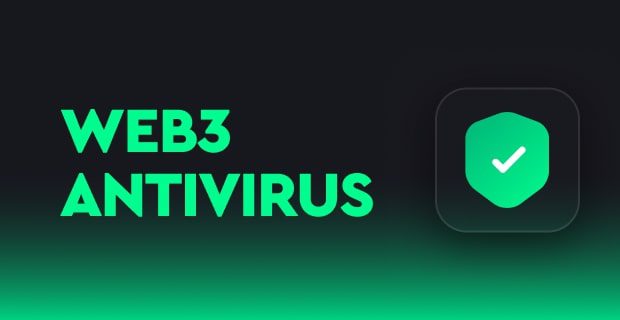There has been a growing interest in Web3 - the next generation of the Internet that promises to be more decentralized, transparent, and secure than the current Web 2.0. With the rise of decentralized applications (dApps), blockchain technology, and cryptocurrencies, Web3 offers a new way of interacting with the internet and conducting transactions that are more secure and private. However, with new opportunities come new challenges, and Web3 security becomes one of the most critical issues that need to be addressed to ensure the safety and privacy of users.
In this article, we will explore the key aspects of Web3 security, including the overview of Web3 Cyber Security, and Web3 Risks, and provide practical advice on how to safeguard your decentralized future.
1. Overview of Web3 Security Industry
a. Web2 vs Web3: Security
When comparing the two web versions, it is clear that hacks in Web2 are temporary and easy to solve while users in Web3 will suffer more severe consequences. Specifically, if a platform in Web2 falls victim to hacking, the most significant impact is the loss of personal information, such as credit card numbers, addresses, and names. This information may be leaked onto the internet, but credit card companies can take quick action by freezing their cards, issuing new ones, and reimbursing any stolen funds.
Unlike the manageable damage in Web2, the ramifications of a hack in Web3 can be much more severe. If Web3 platforms are breached, thousands of people could lose permanent access to their digital assets. This type of damage can be irreparable, and the repercussions may last for an extended period.
Besides, the Web2 enterprise world boasts a range of security options, such as antivirus software, firewalls, cloud-based security suites, VPNs, and Zero Trust for network access. However, in the Web3 landscape, most projects rely on single-layer security solutions that fall short of effectively deterring attacks.

Hacks in Web2 are temporary and easy to solve while users in Web3 will suffer more severe consequences.
b. Doubts regarding Security in Web3
Over the past few years, there has been a significant surge in the number of hacks and thefts in Web3 decentralization. Shockingly, in 2021 alone, cybercriminals stole over $2 billion worth of cryptocurrency assets through hacks and scams. A majority of these attacks were a result of hackers exploiting vulnerabilities in smart contracts, which caused losses of more than $1.3 billion in 2021, increasing by 250% from the previous year. To add to the severity, the first five months of 2022 saw a rise of 138%, with losses of $1.8 billion.
This rise in thefts and scams coincided with the impressive growth of DeFi and the proliferation of cross-chain technologies. However, only 14% of DeFi projects had undergone formal security audits. This means that most Web3 projects are vulnerable to attacks, highlighting the need for increased security measures and better security protocols.
2. What are the most common Web3 Security Risks?
Web3 scammers are creative in the extreme, coming up with sophisticated fraud schemes designed to catch you off guard and steal your crypto assets. Let’s take a look at some most common dangers you may face in the web3 space:
- Phishing attacks: This is a common form of cyber attack that involves the use of fake websites or emails to trick users into giving away their personal information or digital assets. With Web3, phishing attacks can be even more dangerous because they can result in the loss of cryptocurrency or other digital assets.
- Malicious smart contracts: This can perform a variety of risky operations, including the capacity to halt and restrict transactions, delegate calls to other contracts, burn tokens, grant access to all assets in the user's wallet to the contract creator, and more. Scammers can design their dangerous smart contracts or take advantage of flaws in current ones.
- Copymints: These are fraudulent or plagiarized NFT collections that violate the rights of writers. These tokens are prohibited by marketplaces and have no collectible value.
- Poisoning attacks occur when scammers create a wallet address with similar first and last characters to the user’s wallet. They are designed to trick the user into believing it is their address and mistakenly send assets to fraudsters.
3. Top Web3 Security Tools 2023
The most popular web3 security solutions are browser extensions that protect users in real-time:
a. Web3 Antivirus
Web3 Antivirus is a browser security extension that supports Chrome, Brave, Firefox, Opera, and Microsoft Edge. This extension empowers users to explore the web3 technology confidently by instantly warning them of any potential threats while analyzing all transactions.
To make it easier for users to understand the risk level, W3A reports use color codes, where red indicates high risks, yellow denotes medium, and green represents low risks. Once a user receives a report, they can decide whether to proceed or block the transaction.
W3A provides comprehensive transaction details, and smart contract data, and highlights any risks. Among the risks that W3A can detect are malicious code patterns and methods, dangerous signing requests, proxy contracts, poisoning attacks, and ice phishing, among others.

Web3 Antivirus is one of the Web3 Security Tools 2023
Web3 Antivirus does not only analyze the contract that the user is interacting with, but it also tracks all linked contracts to ensure that no malicious logic is hidden in the chain of contracts. Furthermore, W3A simulates a transaction to demonstrate precisely what assets a user will grant access to, give away, and receive.
b. TrustCheck
TrustCheck is a powerful security tool designed to safeguard your cryptocurrency transactions. Developed as a Chrome plugin, it employs the latest machine-learning technology to simulate transactions and identify any suspicious activity or potential threats.
With TrustCheck, you can rest assured that your crypto assets are safe from malicious attacks, compromised permissions, and fraudulent activities. The plugin uses both blocklists and allowlists to streamline the verification process of your crypto wallets, token collections, URLs, and smart contracts.
TrustCheck is a highly effective tool that is capable of detecting a wide range of scams, including phishing websites, drainers, risky approvals, and dangerous signing requests. It scans for malicious code patterns and red flags that indicate potential threats to your cryptocurrency investments.
c. Blockem
Blockem, a powerful Chrome extension, offers real-time transaction validation to detect and stop fraudulent activities. By conducting a thorough analysis of the Ethereum network, this tool verifies the legitimacy of the address with which the user is interacting. This process ensures a secure and trustworthy transaction environment for users.
Not only does Blockem prevent fraudulent activities, but it also provides users with valuable insights. Users can access a comprehensive overview of the address' activity history, including details about its first and last transactions, as well as the number of tokens it holds. This feature helps users make informed decisions before engaging in any transaction with the address.
4. Conclusion
In conclusion, the security of decentralized Web3 is critical to ensure the trust and integrity of the decentralized web. As the decentralized web becomes more popular and widely used, it is essential to implement robust security measures to protect users' assets and data.
Want to stay up-to-date with the latest Tech insights? Subscribe to our newsletter!



